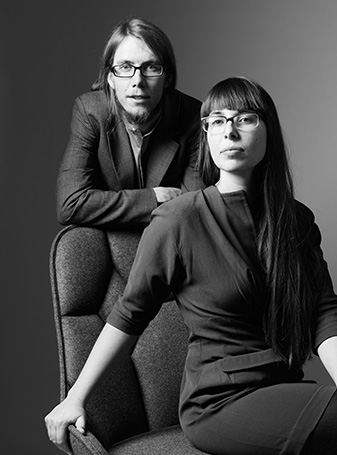Where does your inspiration come from?
FF: Mainly fashion, art and materials. We often go to exhibitions, and we enjoy experiencing the absence of any restrictive frames. Our working process is a sequence of experiments in which we physically investigate materials and form. That inspires us to participate and create things ourselves. When something doesn’t turn out as we intended, something else is born instead.
How did you come to be designers?
FF: In my case it happened gradually. I come partly from a family of craftspeople. Granddad was a welder, Grandma was a seamstress, and I’ve always been surrounded by practical people who make things. After high school I started to train as a cabinet maker. After that, putting in for interior architecture at HDK (the School of Design and Crafts, Göteborg) came naturally.
EMB: I grew up in France, in a home where art meant everything. My mother’s an artist and when I was still tiny I saw lots of exhibitions and hobnobbed with different kinds of artistic expression. A creative occupation was the obvious choice, but to begin with I wasn’t sure which. I put in for interior architecture and design because I had a practical bent. It proved the right choice. I like the personal aspect of design. It’s something that envelops you, something close-fitting. A piece of furniture, for example, is capable of clothing a person. We look different, depending on what kind of chair we’re sitting in.
What’s it like, working in tandem?
EMB: We have different processes, even though we share the same objectives. I sketch a lot, unlike Fredrik, who is more direct and intuitive. He likes going to the workshop to try something out immediately. And then we talk an awful lot. My French schooling has given me an intellectual approach, always questioning things. I keep on asking Why, whereas Fredrik will ask How. In our workshop we experiment freely and fabricate different prototypes. We are part of a never-ending craft process, by which we in turn are all the time being developed.
